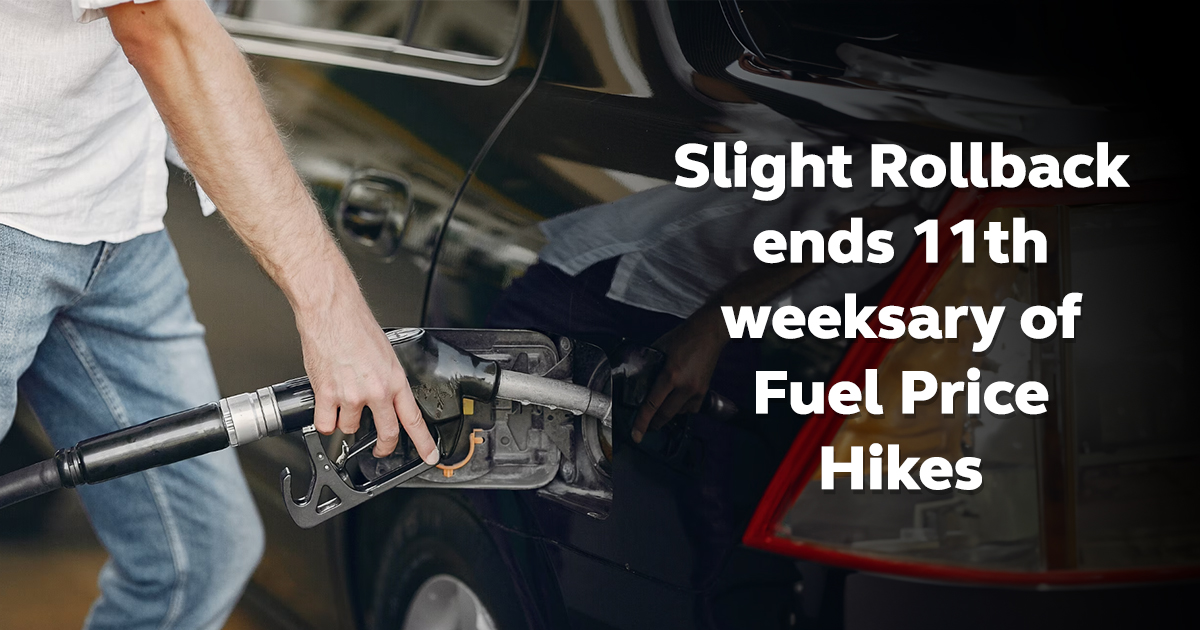
The recent increases in diesel, kerosene, and gasoline prices have caused quite a stir in the Philippines. Imagine if the cost of fuel for your car went up by P17.30 per liter for diesel and P15.95 per liter for kerosene in just 11 weeks! That’s like filling up your gas tank and finding out it costs way more than before. Even gasoline prices surged by P11.85 per liter in 10 weeks.
So, what does all this mean for everyday life and logistics companies? Well, it’s like a domino effect. These oil price hikes add up, and the overall cost of living and doing business goes up as well. According to the Department of Energy (DOE), if you look at the entire year so far, gasoline prices have gone up by P17.50 per liter, diesel by P13.60 per liter, and kerosene by P9.94 per liter. That’s a lot of extra pesos you’re shelling out for fuel.
Understanding Fuel Price Dynamics
Now, think about the logistics companies responsible for moving goods from one place to another. When fuel prices rise, it’s like they’re getting hit in the wallet. They have to spend more money on fuel for their trucks and delivery vehicles. So, what do they do? They have to find ways to keep things affordable while still getting your favorite snacks, gadgets, and shoes to your doorstep.
But here’s the tricky part: fuel prices don’t rise the same way everywhere. Imagine going to different stores and seeing that the price of your favorite snack is different at each one. That’s what happens with fuel prices too. The DOE checked prices from September 19 to 21, and they found that diesel prices ranged from P62.95 to P74.04 per liter, gasoline prices varied depending on the type of fuel, ranging from P62.35 to P90.15 per liter, and kerosene prices ranged from P80.75 to P93.09 per liter.
Factors Influencing Fuel Prices
Fuel prices don’t just change randomly; they respond to various factors:
- Global Oil Market Dynamics: The price of crude oil on the global market plays a central role in determining fuel prices. Events like conflicts in oil-producing regions or changes in oil production levels can lead to fluctuations.
- Geopolitical Events: Political tensions and decisions by oil-producing nations can influence oil prices. For example, conflicts in the Middle East or trade disputes can lead to uncertainty in oil markets.
- Supply and Demand: Basic economics apply to fuel prices. When demand for fuel rises (e.g., during peak travel seasons), prices tend to follow suit.
The Role of Government Policies
Government policies and taxes also impact fuel prices. Taxes levied on fuel, environmental regulations, and subsidies can affect the final price at the pump.
Impact on Logistics Operations
So, if you’re a logistics company, this wide range of fuel prices makes planning and budgeting even more challenging. It’s like trying to budget for your birthday party when you’re not sure how much snacks, drinks, and decorations will cost because they keep changing prices.
In the end, what we see here is that the ups and downs of fuel prices aren’t just numbers on a gas pump. They’re like a ripple that affects everything from your daily expenses to how logistics companies operate. It’s a reminder of how interconnected our world is and why we need to find smart and sustainable ways to deal with these fluctuations.
Fuel-Efficient Driving Habits
As fuel costs continue to fluctuate, individuals and businesses are keen to find ways to reduce their expenses. Here are some of the fuel-efficient driving habits to do:
1. Proper Vehicle Maintenance
One of the most fundamental ways to save on fuel costs is to ensure your vehicle is in top shape. Regular maintenance, such as oil changes, air filter replacements, and tire maintenance, can improve fuel efficiency.
2. Efficient Driving Techniques
How you drive can significantly affect fuel consumption. Techniques like gentle acceleration, avoiding excessive idling, and maintaining a steady speed on highways can save fuel.
3. Carpooling and Ridesharing
Consider sharing rides with colleagues, friends, or neighbors. Carpooling not only reduces fuel costs but also lessens the environmental impact by reducing the number of vehicles on the road.
4. Public Transportation and Alternatives
Explore public transportation options available in your area. Buses, trains, and subways can be cost-effective alternatives to driving, especially for daily commutes.
5. Exploring Hybrid or Electric Vehicles
If you’re in the market for a new vehicle, consider hybrid or electric options. These vehicles are often more fuel-efficient and come with long-term cost savings.
Some of the Budgeting and Trip Planning to Consider
- Creating a Fuel Budget: Just as you budget for groceries or entertainment, create a budget specifically for fuel expenses. This helps you keep track of your fuel spending and plan accordingly.
- Combining Errands and Planning Efficient Routes: Make the most of your trips by combining errands and planning efficient routes. This reduces the need for multiple short trips, which can be less fuel-efficient.
- Utilizing Smartphone Apps: Take advantage of smartphone apps that provide real-time navigation, traffic updates, and fuel price comparisons. These apps can help you find the best fuel prices in your area.
Fuel Rewards Programs and Discounts
Loyalty Programs
Many fuel companies offer loyalty programs that provide discounts or cashback on fuel purchases. Joining these programs can lead to significant savings over time.
Credit Card Rewards
Some credit cards offer cashback or rewards for fuel purchases. Check if your credit card provides such benefits and take advantage of them.
Special Discounts and Promotions
Keep an eye out for special promotions or discounts offered by fuel stations. Some of the logistics providers like Lalamove, Transportify, and Grab are partnered with fuel stations like Shell, Petron, Caltex, Esso, and SINOPEC. These temporary discounts can help you save during price spikes.
Managing expenses during fuel price spikes is a challenge, but it’s one that consumers can navigate successfully. By understanding fuel price dynamics, adopting fuel-efficient driving habits, exploring alternative transportation modes, budgeting wisely, and taking advantage of rewards programs, consumers can mitigate the impact of rising fuel costs on their daily lives. Additionally, considering eco-friendly vehicle options and participating in community carpooling initiatives contribute to long-term savings and a greener, more sustainable future. As consumers adapt and embrace these strategies, they empower themselves to make informed choices that benefit both their wallets and the environment.
